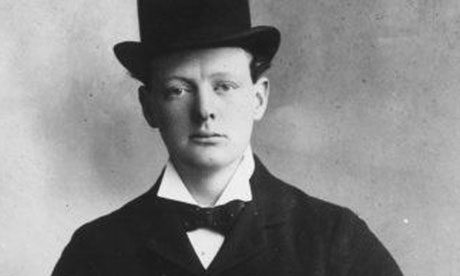Young Winston Churchill had done poorly in school. He narrowly graduated Harrow, where teachers had forever scarred him against the notion of learning Latin. Applying to Sandhurst Military Academy, Churchill needed to pass three of five required exams. He knew his abilities in English and Chemistry, hated Latin, and doubted French, leaving only Mathematics. In his singular autobiography, Churchill wrote, “All my life from time to time I have had to get up disagreeable subjects at short notice, but I consider my triumph, moral and technical, was in learning Mathematics in six months.”
With a foundation built by Harrow master, Mr. C. H. P. Mayo, Churchill made way in solving the “hieroglyphs” to be able to meet the requirements set by the Civil Service Commissioners. As he worked, he bemoaned perplexing devices such as sine, cosine, tangent, the quadratic formula, and the Binomial Theorem. One night, Churchill writes, “I had a feeling once about Mathematics, that I saw it all—Depth beyond depth was revealed to me—the Byss and the Abyss. I saw, as one might see the transit of Venus—or even the Lord Mayor's Show, a quantity passing through infinity and changing its sign from plus to minus. I saw exactly how it happened and why the tergiversation was inevitable: and how the one step involved all the others. It was like politics.”
Politics, which he had studied after his father, made sense to him, and Churchill began to embrace the tenants of maths. While at Sandhurst, he set aside formulae for a time, but he took them up again upon placement into the 4th Queen's Own Hussars. His income was £300 per year plus a £400 allowance from his mother, and he calculated that he needed at least another £100 to remain at his accustomed lifestyle. Looking into many sources of additional income such as journalism, Churchill finally settled on answering every possible mathematical quiz available in so many colleges and newspapers around the empire for cash prizes. He also set into a hobby of mathematical proofs, what he called “little riddles”, which occupied more and more of his time. Churchill was transferred between Africa and India before returning to England, also playing polo, studying thought-problems, and progressing ever further into calculus in his own time.
In 1906, Churchill read several of Albert Einstein's papers of his Annus Mirabilis in a translation of Annalen der Physik, for which the Jewish German would be given a Nobel Prize. Churchill wrote, “For the first time to me, mathematical play was shown as credible, and my life took new direction.” He exchanged correspondence with Einstein and eventually used his growing political influence to offer Einstein a lucrative position as full professor at Cambridge. The two worked together on many projects, later sorting out Einstein's General Relativity, while both also worked their “day jobs” as professor and Minister of Parliament. Churchill grew slowly through the ranks of government before being beaten out in 1931, taking up what he called his “wilderness years.” He published his own mathematical papers written from home, studying topology and complex interactions. As war with Germany approached, Churchill returned to the government in patriotic spirit, eventually being named Prime Minister for his calls for defense. Over one of their many teas, Einstein mentioned to Churchill the idea among the physics community of an “atomic” weapon using the explosive power of fission by separating a nucleus.
Churchill, who had previously been a proponent of tanks and aircraft, leaped upon the idea. Using uranium from Scottish peat bogs, Project Tube Alloys (later renamed Wonder) successfully tested the first atomic bomb in 1943. Churchill endorsed its use with thirteen targets, and Germany quickly surrendered, soon followed by Japan. As word spread of the radioactive fallout with the city of Dresden as the prime example, Churchill was given much blame and removed from office with the elections of 1945. He returned briefly in 1951 to the prime ministership, during which he tried to sort out the problems of the Atomic Age he felt he created, only to succumb to a series of strokes. He died in 1965, when his work on the Unified Field Theory merited him, as well as Einstein and several others, a shared Nobel Prize.
–
In reality, Churchill's vision of mathematics ended, “But it was after dinner and I let it go!” As for mathematics, Churchill wrote, “I quitted for ever in the year 1894...” He turned instead to writing, where he would serve as war correspondent and gain popular leverage to ascend quickly through government despite numerous setbacks.

Robbie Taylor explores a similar idea in his article 1st January, 1764 - Mozart has his vision of mathematics on the Today In Alternate History web site.
ReplyDelete